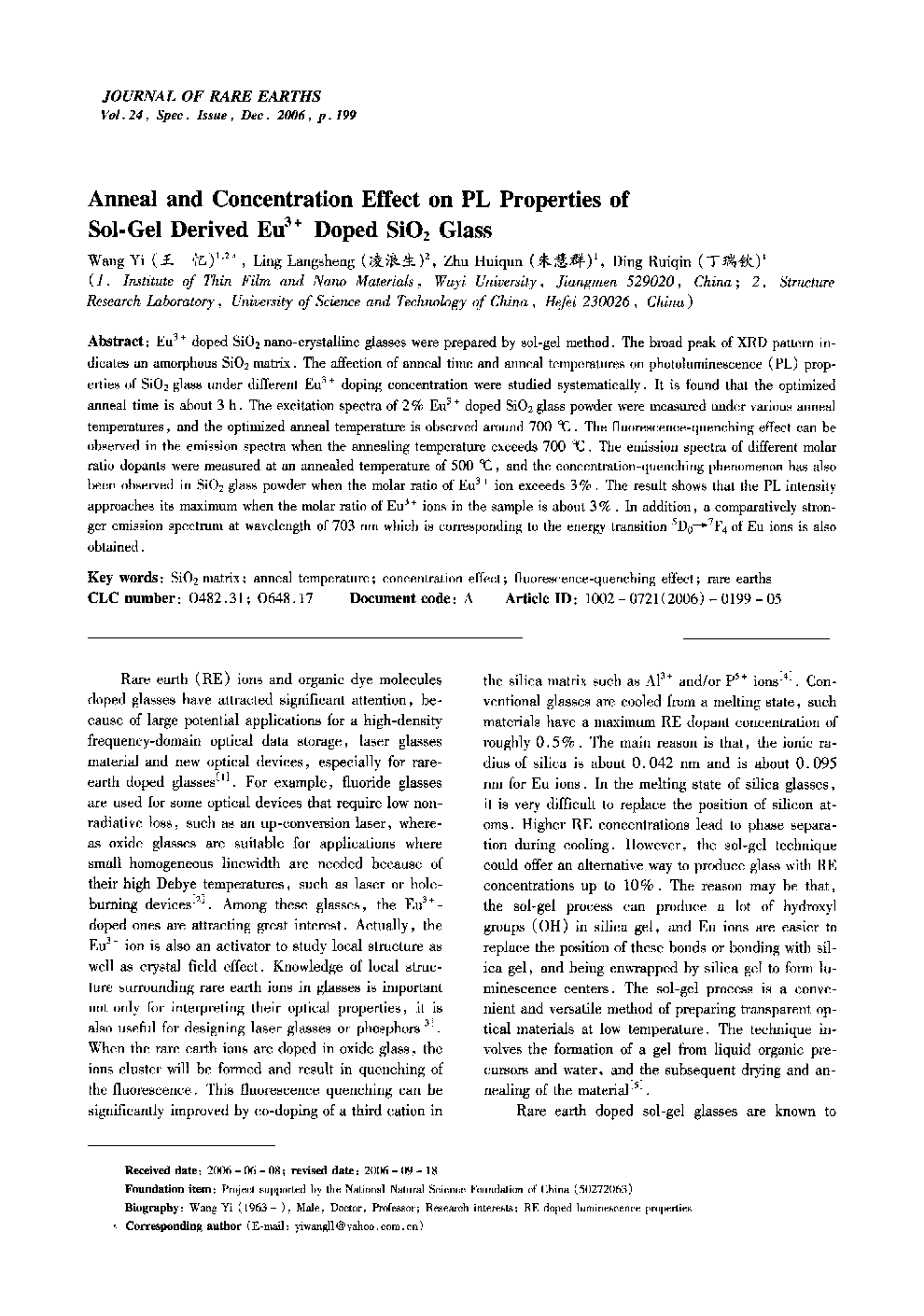| Article ID | Journal | Published Year | Pages | File Type |
|---|---|---|---|---|
| 1260811 | Journal of Rare Earths | 2006 | 5 Pages |
Eu3+ doped SiO2 nano-crystalline glasses were prepared by sol-gel method. The broad peak of XRD pattern indicates an amorphous SiO2 matrix. The affection of anneal time and anneal temperatures on photoluminescence (PL) properties of SiO2 glass under different Eu3+ doping concentration were studied systematically. It is found that the optimized anneal time is about 3 h. The excitation spectra of 2% Eu3+ doped SiO2 glass powder were measured under various anneal temperatures, and the optimized anneal temperature is observed around 700 °C. The fluorescence-quenching effect can be observed in the emission spectra when the annealing temperature exceeds 700 °C. The emission spectra of different molar ratio dopants were measured at an annealed temperature of 500 °C, and the concentration-quenching phenomenon has also been observed in SiO2 glass powder when the molar ratio of Eu3+ ion exceeds 3%. The result shows that the PL intensity approaches its maximum when the molar ratio of Eu3+ ions in the sample is about 3%. In addition, a comparatively stronger emission spectrum at wavelength of 703 nm which is corresponding to the energy transition 5D0→7F4 of Eu ions is also obtained.
